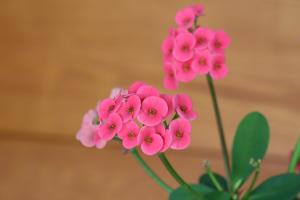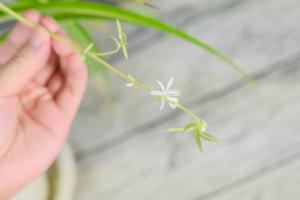1、 Curing method
1. Temperature: it likes a cooler environment. This habit can be easily seen from its distribution area in China. Generally speaking, it can be between 15 and 20 degrees. Its cold resistance is good, but its heat resistance is not very good. Therefore, it is strictly prohibited to keep it in a very hot environment, especially in summer, which requires a little attention

2. Light: Blue thorn head has particularly high requirements for sunshine during flowering. But too strong light is not suitable. Astigmatism is best for it. When the temperature is high, in addition to cooling, another important task is to block the light, otherwise it will burn the leaves and affect the flowering

3. Watering: the habit of blue thorn head is relatively drought resistant, but its waterlogging resistance is very poor. Therefore, when watering, it can be poured according to the method of "better dry than wet". In the growth period, more water can be poured relatively, but the substrate should not be too wet. The semi wet state is better. Keep dry in cold winter

4. Fertilization: Nitraria lanceolata has strong adaptability and basically has no need for fertilizer. It can choose soil with more nutrients

2、 Breeding skills
1. Reproduction: seeds can be used to reproduce, which is the simplest way. Sowing in spring is better, the emergence probability will be relatively high, and a large number of plants with blue thorn head can be obtained. However, it is also necessary to adjust the surrounding environment in time after sowing. It is better to have a temperature of about 18 degrees, and the light should be slightly blocked

2. Weeding: if the plant is planted in a large area in the field, there is a problem that some weeds will appear from time to time. They will compete with the plant for nutrients, so they need to be removed in time, preferably regularly

3、 Problem diagnosis and treatment
1. Disease: Blue thorn head has strong resistance, and there are not too many diseases. Occasionally there is "black spot". The important harm is the leaves, which will lead to many spots on them. Chlorothalonil can be used for treatment, and pay attention to drainage in the rainy season. Some phosphate and potassium fertilizers must be supplemented

2. Pests: there are not many pests, but the harm will be relatively large after they appear. It is necessary to spray immediately when they are found

4、 Other issues
1. Toxicity: it has no poison and will not be harmful

2. Whether it can be raised at home: it has many kinds and is suitable for viewing. It can be placed at home, but it is more for garden purposes, such as arranging flower beds and so on< a>


 how many times do yo...
how many times do yo... how many planted tre...
how many planted tre... how many pine trees ...
how many pine trees ... how many pecan trees...
how many pecan trees... how many plants comp...
how many plants comp... how many plants can ...
how many plants can ... how many plants and ...
how many plants and ... how many pepper plan...
how many pepper plan...































